A great team start with a great leader. This involves setting goals for the team, communicating the mission, setting proper systems and standards and leading by example, Team motivation- Simple recognition of your team’s efforts and celebrating their achievement can go a long way.
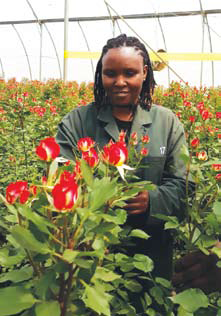 Who is Nancy Kurgat? Describe yourself as concisely as you may.
Who is Nancy Kurgat? Describe yourself as concisely as you may.
Nancy Kurgat is the production and technical manager, Sian Agriflora. She is also a team leader and has over 15 years experience in the floriculture sector. She has a training in Horticulture (Egerton University), Business & strategic management (Moi University) and several in job trainings on supervisory and leadership among others. Over the years, she has grown and progressed through the ranks from supervisory level to management level.
Ladies have a natural affinity for the world of flowers, and show much greater appreciation for it than men do. Even then, very few go about establishing their careers in the flower production industry, like you have done. What spurred you to do so? Any role model or someone who inspired you?
My role model in the industry is Mr Andrew Wambua, the General Manager of Molo River who was my boss when I first joined the industry at Equator flowers. I attribute a lot of my success to the first trainings and mentorship I attained from him. I cannot forget our Chairman Mr. Micah Cheserem whose leadership really inspired and geared me to another level of leadership and creativity. I have not words to express my gratitude other than a big thank you.
In addition, it has been noticed by men of all ages is the affinity of women towards flowers; the freshness, gorgeousness and the innocent blooms have always been a dire favourite of women. Even with this love for flowers women perceived the career as hard for to pursue because of the associated obstacles for instance, growing is tasking and needs a lot of commitment in terms of time. Most women will wish for careers that ensure they are home early and over the weekends to take care of the family.
I joined the industry immediately after I cleared my studies and I must say that I also had the same reservations but after working for some time I realized that I enjoyed more than I thought! I cheered myself that, “YES, I CAN, and will be, a significant part of the floriculture industry in spite of all the obstacles.”
 His Excellency Daniel Toroitich Arap Moi, Farmer number one for those who grew up in 80s and 90s, a flower farmer and chairman to one of the fastest growing group in the sector, former president and crusader for agriculture as a whole, was promoted to glory on Tuesday, February 4, peacefully. He was 95. All the flowers used during the occasion came from his farms. It was a fitting salute to his dedication, not only to his farms, but to the industry he loved.
His Excellency Daniel Toroitich Arap Moi, Farmer number one for those who grew up in 80s and 90s, a flower farmer and chairman to one of the fastest growing group in the sector, former president and crusader for agriculture as a whole, was promoted to glory on Tuesday, February 4, peacefully. He was 95. All the flowers used during the occasion came from his farms. It was a fitting salute to his dedication, not only to his farms, but to the industry he loved.
 Due to the impact of the 2019- CoV, the 2020 China International Floriculture & Horticulture Trade Fair (Flower Expo China) will be rescheduled for a new date and venue.
Due to the impact of the 2019- CoV, the 2020 China International Floriculture & Horticulture Trade Fair (Flower Expo China) will be rescheduled for a new date and venue.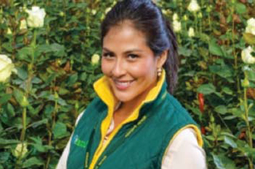 Pest and disease mapping in any environment has far-reaching effects. Thirty years ago, wild poliovirus was present in more than 125 countries and paralysed 350,000 people every year, primarily young children. Now incredibly targeted tracking and mapping efforts, combined with a global immunisation program by Global Polio Eradication Initiative (GPEI), have reduced the number of cases by more than 99 per cent, saving more than 13 million children from paralysis.
Pest and disease mapping in any environment has far-reaching effects. Thirty years ago, wild poliovirus was present in more than 125 countries and paralysed 350,000 people every year, primarily young children. Now incredibly targeted tracking and mapping efforts, combined with a global immunisation program by Global Polio Eradication Initiative (GPEI), have reduced the number of cases by more than 99 per cent, saving more than 13 million children from paralysis.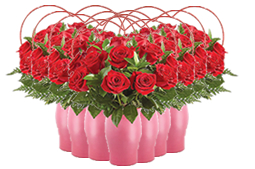 Florist Zhong Wenping is usually racing around at valentine’s time, preparing for Valentine’s Day. But this year her flower shop in Jingshan, a small city in central Hubei province, was quiet.
Florist Zhong Wenping is usually racing around at valentine’s time, preparing for Valentine’s Day. But this year her flower shop in Jingshan, a small city in central Hubei province, was quiet.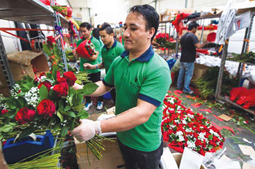 If you are feeling anxious about Valentine’s Day, spare a thought for those working in the floral industry. For them, this is the busiest time of the year, and it’s largely about just one flower: the ubiquitous red rose.
If you are feeling anxious about Valentine’s Day, spare a thought for those working in the floral industry. For them, this is the busiest time of the year, and it’s largely about just one flower: the ubiquitous red rose.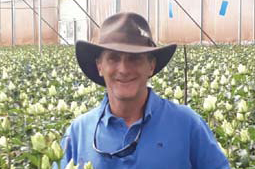 “We want to be remembered as the farm which integrated their farming systems to enable sustainability both environmentally and socially to conserve soils for the future generations while improving livelihoods of people in the community” asserted Craig General Manager Kisima Floriculture Kisima which sits at an altitude of 2400M produces large headed premium roses which are sold through the auction. They export over 20 million stems annually, being a smallholder grower with less than 30ha to survive in the sector of big giants; you have to design a unique way of operations. For this, Kisima believes in two major unique ways; cutting cost innovatively and practicing environmentally and socially sustainable farming.
“We want to be remembered as the farm which integrated their farming systems to enable sustainability both environmentally and socially to conserve soils for the future generations while improving livelihoods of people in the community” asserted Craig General Manager Kisima Floriculture Kisima which sits at an altitude of 2400M produces large headed premium roses which are sold through the auction. They export over 20 million stems annually, being a smallholder grower with less than 30ha to survive in the sector of big giants; you have to design a unique way of operations. For this, Kisima believes in two major unique ways; cutting cost innovatively and practicing environmentally and socially sustainable farming.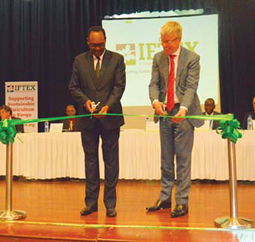 IFTEX which was launched in 2012 has grown tremendously to be a renowned exhibition brand worldwide. Currently it attracts more than 250 both national and international exhibitors ranging from; growers, buyers, breeders, suppliers, regulatory and compliance institutions and logistics. Over time IFTEX has contributed to promotion of Kenyan cut flowers which its demand continues to rise in world market. This action has enabled the Kenyan flowers to compete well with other giants like Ecuador, Colombia and also Ethiopia who are coming up well.
IFTEX which was launched in 2012 has grown tremendously to be a renowned exhibition brand worldwide. Currently it attracts more than 250 both national and international exhibitors ranging from; growers, buyers, breeders, suppliers, regulatory and compliance institutions and logistics. Over time IFTEX has contributed to promotion of Kenyan cut flowers which its demand continues to rise in world market. This action has enabled the Kenyan flowers to compete well with other giants like Ecuador, Colombia and also Ethiopia who are coming up well. Who is Nancy Kurgat? Describe yourself as concisely as you may.
Who is Nancy Kurgat? Describe yourself as concisely as you may.